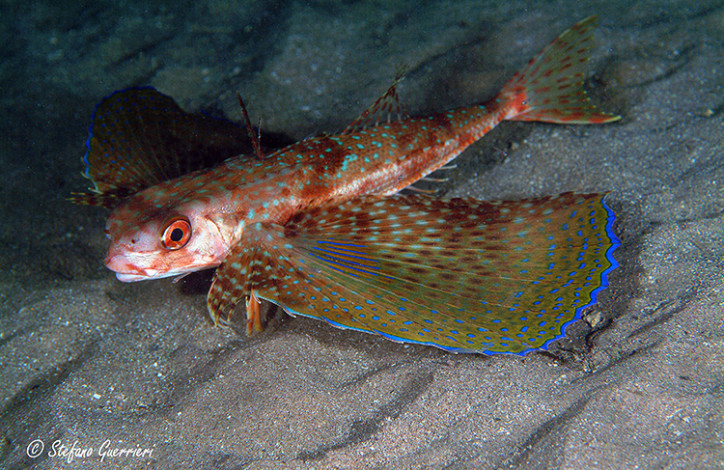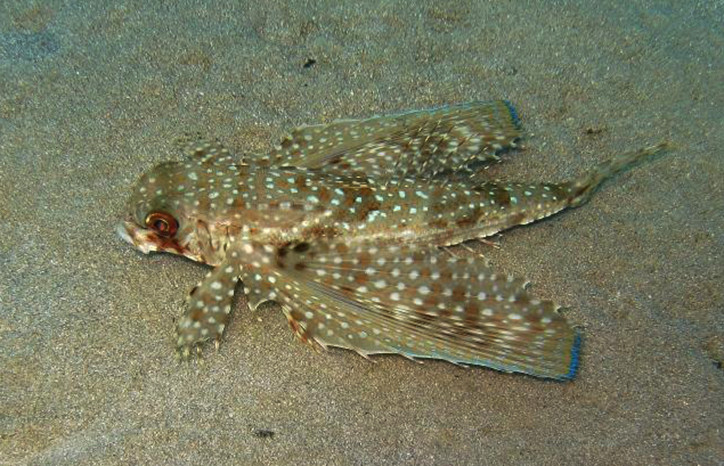Fish of the Dactylopterus (flying gurnards) genus of the Dactylopteridae (flying gurnards) family of the suborder Dactylopteroidei of the Scorpaeniformes order of the Acanthopterygii superorder.

(Flying gurnard. Photo by © Stefano Guerreri. salentosommerso.it)
Flying gurnard (Dactylopterus volitans) was first described in 1758 by the Swedish naturalist Carl Linnaeus (1707-1778). It inhabits the depth of 1-100 meters.
It prefers to swim close to the sandy, oozy, stony-sandy bottom. The maximum recorded length is 50 cm; specimens up to 38 cm long are more common. The maximum weight is 1.8 kg. It feeds on crabs and other bottom crustaceans, small fish.

(Flying gurnard. Photo by © Roberto Pillon. fishbase.org)
It is a rare inhabitant of the Adriatic, which is found in its southern part.
When it’s taken out of the water, it makes sounds resembling grunts.
Names of flying gurnard (Dactylopterus volitans) in other languages as follows:
Peshku gjel fluturues (Albanian), Vliegende poon (Dutch), Χελιδονόψαρο κόκκινο (Helidonopsaro kokkino) (Greek), Alón volador (Spanish), Pesce civetta (Italian), Flughahn (German), Strwolotka (Polish), Средиземноморский долгопёр (Sredizemnomorskiy dolgopjor) (Russian), Cabrinha-de-leque (Portuguese), Kokot letač (Serbian, Croatian), Poule de mer (French).